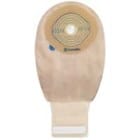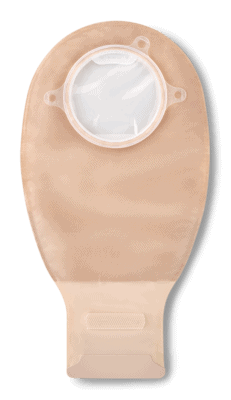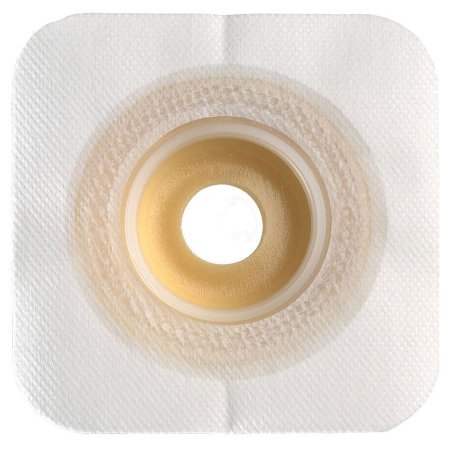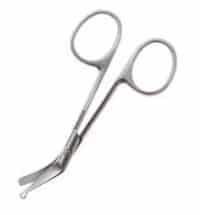Changing your ostomy pouch after surgery is one of the first things you will learn from your surgeon or nurse before being discharged from the hospital. You will likely be given a starter kit that will include all the ostomy supplies necessary and instructions on when to drain and change your ostomy system.
Changing your ostomy pouch includes several supplies and steps. We will go over those steps for this process, hoping to make it easier for you.
Gather your ostomy supplies
- Adhesive remover
- Skin protectant
- Skin barrier
- Measuring guide, pencil, and scissors, if using a cut-to-fit wafer
- Stomahesive paste
- Plastic bags
- Barrier wipes
- Toilet paper
- Washcloth and towel
- New ostomy pouch
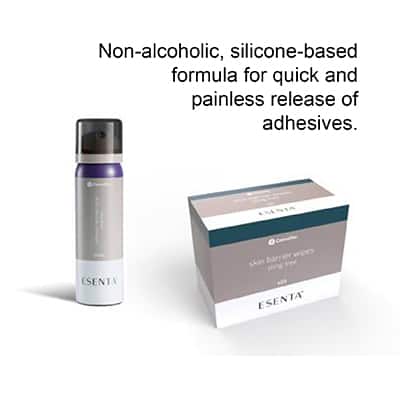 Remove the used ostomy pouch
Remove the used ostomy pouch
- First, wash your hands. It is essential to eliminate as much possibility of cross-contamination when changing your ostomy appliance.
- If you use a drainable pouch, empty it first into the toilet.
- Using an adhesive remover, start wiping at the upper edge of the skin barrier. Gently and slowly push the skin away from the skin barrier with one hand. Continue wiping the skin around the border with the adhesive remover and slowly peel back the skin barrier with the other hand. ESENTA Sting-Free Adhesive Remover Spray or Wipes is an excellent choice.
- Continue to peel around the skin barrier until the pouching system comes off.
- Seal the used pouch in a plastic bag and discard it in a trash receptacle.
Clean the peristomal skin
- The next step in changing your ostomy pouch is using toilet paper and wiping any stool off the skin around the stoma.
- Clean the peristomal skin with warm water and a washcloth. Pat the area with a clean towel and allow it to air-dry for 1 to 2 minutes.
- As an alternative, barrier wipes and sprays can also be used to clean the area. Choosing a non-alcoholic barrier wipe can help prevent any stinging or burning to this sensitive skin.
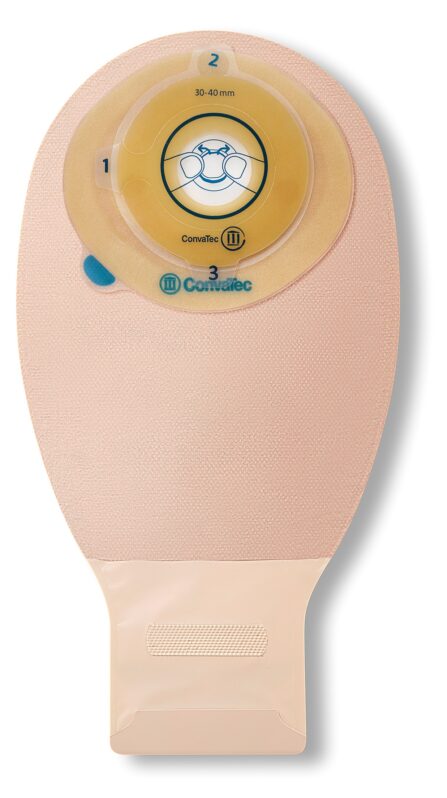 Measure your stoma
Measure your stoma
- If you are using a cut-to-fit skin barrier, the next step in changing your ostomy pouch is to measure your stoma. Use a measuring guide and leave only 1/8″ to 1/16″ between the measuring guide and the stoma.
- Using a pencil, trace the correct size onto the back of the wafer with the starter hole in the middle. Cut out the hole with scissors, ensuring the edges are smooth.
- Alternatively, you can use moldable products that eliminate the need for measuring and cutting. ConvaTec Moldable Technology products are available as one and two-piece systems. Many ostomates find moldable products more comfortable, convenient, and secure.
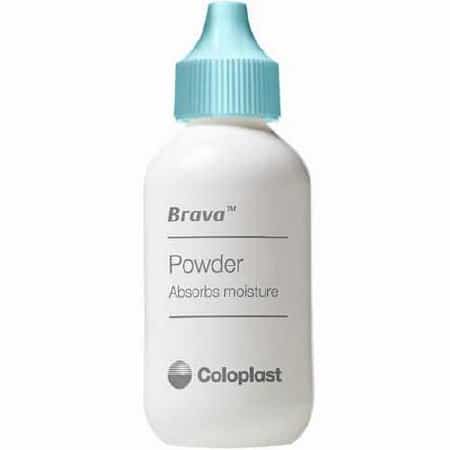 Apply barrier paste, powder, or film
Apply barrier paste, powder, or film
- Put on extra skin protectants, such as moisture barrier paste or powder if needed. Apply the skin protectant to the peristomal skin where the skin barrier will be placed. Moisture barrier pastes work to fill folds and creases in the skin to make a smooth surface for the skin barrier. These products help prevents leaks, making the ostomy system more secure.
- When changing your ostomy pouch, stoma powders are another useful ostomy accessory. Stoma powders form a protective barrier to absorb moisture and keep the peristomal skin dry.
- Another ostomy accessory to consider is a barrier film spray or wipe. The transparent film acts as a synthetic protective skin barrier to adhesives, bodily fluids, and friction. Many skin protectants are non-alcoholic to prevent stinging, breathable, and fast-drying. And, since they are hypoallergenic, they are a safe choice for damaged skin.
Apply a new ostomy pouch
- If you use a cut-to-fit, pre-cut, or moldable skin barrier, carefully place it over the stoma.
- If you use a two-piece ostomy pouching system with a separate skin barrier and pouch, snap the pouch onto the barrier. Start at the bottom and work your fingers around until the skin barrier is fully attached.
Two-piece ostomy products like the SenSura Mio Click Closed Pouch by Coloplast feature a click coupling that locks into the matching skin barrier with an audible click, adding a greater sense of security. These products are color-coded for easy identification to ensure the pouch and the barrier correctly correspond.
- Give the pouch a slight tug to ensure it’s securely in place.
- Press the skin barrier against your skin and hold it for approximately one minute. This step will help mold the barrier to your skin to achieve a good seal.
- If you use a drainable pouch, you may need to use a clip to clamp the tail. Some pouches have a lock n roll style tail with Velcro. Roll the tail upward and lock it in place using the Velcro closure. ConvaTec offers ostomy pouches that feature Invisiclose, a clipless tail closure that hides the flapping tail for security and comfort. The ConvaTec Esteem + One-Piece Drainable Pouch with Invisiclose is an excellent choice that offers this security, comfort, and discretion.
- The last step in changing your ostomy pouch is to wash your hands thoroughly.
When to call your doctor
It is essential to keep an eye on your stoma and the peristomal skin to ensure that it stays dry and healthy. These are some signs to watch out for and when you should contact your doctor.
- You have a lot of pain in your belly or are bloated. This could be a sign that you have a blockage.
- Your stoma smells bad, there is pus draining from it, or it is bleeding without stopping.
- Your stoma is changing in color, is getting longer, or is pulling into your skin.
- The skin around the stoma itches, burns, stings, or has white spots.
- There is blood in your stool.
- You have a fever of 100.4°F (38°C) or higher, or you have chills.
- Your stools are looser than usual.
- You have not produced stool or gas for over four hours.
- You have a significant increase in stool collecting in your pouch.
Additional tips
- Don’t eat late the night before changing your ostomy pouch. Stoma output will likely be less.
- Some bleeding is normal when touching your stoma, but report any unusual color, size, shape, or bleeding to your doctor.
- Try different ostomy products. You may have to shop around to find what works for your unique needs. Everyone has their differences.
- Always follow any special instructions provided by your healthcare professional.
These steps for changing your ostomy pouch that we have offered are only guidelines. Always refer to your doctor and what instructions they have provided. For any questions about the ostomy products and supplies we offer, our Product Experts are just a phone call away and ready to help.

